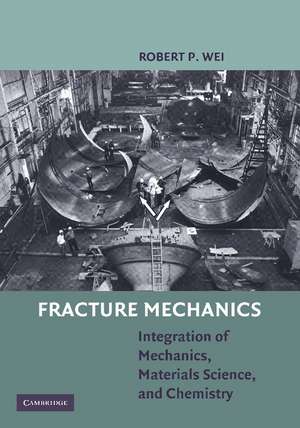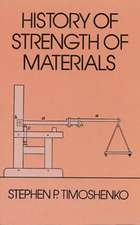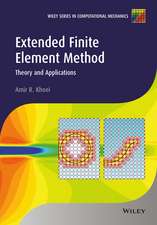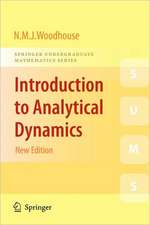Fracture Mechanics: Integration of Mechanics, Materials Science and Chemistry
Autor Robert P. Weien Limba Engleză Paperback – 2014
| Toate formatele și edițiile | Preț | Express |
|---|---|---|
| Paperback (1) | 483.35 lei 43-57 zile | |
| Cambridge University Press – 2014 | 483.35 lei 43-57 zile | |
| Hardback (1) | 406.19 lei 43-57 zile | |
| Cambridge University Press – 7 feb 2010 | 406.19 lei 43-57 zile |
Preț: 483.35 lei
Preț vechi: 543.08 lei
-11% Nou
Puncte Express: 725
Preț estimativ în valută:
92.49€ • 96.81$ • 76.98£
92.49€ • 96.81$ • 76.98£
Carte tipărită la comandă
Livrare economică 31 martie-14 aprilie
Preluare comenzi: 021 569.72.76
Specificații
ISBN-13: 9781107665521
ISBN-10: 1107665523
Pagini: 232
Ilustrații: 160 b/w illus. 10 tables
Dimensiuni: 178 x 254 x 12 mm
Greutate: 0.41 kg
Editura: Cambridge University Press
Colecția Cambridge University Press
Locul publicării:New York, United States
ISBN-10: 1107665523
Pagini: 232
Ilustrații: 160 b/w illus. 10 tables
Dimensiuni: 178 x 254 x 12 mm
Greutate: 0.41 kg
Editura: Cambridge University Press
Colecția Cambridge University Press
Locul publicării:New York, United States
Cuprins
1. Introduction; 2. Physical basis of fracture mechanics; 3. Stress analysis of cracks; 4. Experimental determination of fracture toughness; 5. Fracture considerations for design; 6. Subcritical crack growth - creep controlled crack growth; 7. Subcritical crack growth - stress corrosion cracking and fatigue crack growth (phenomenology); 8. Subcritical crack growth - environmentally enhanced crack growth under sustained loads (or stress corrosion cracking); 9. Subcritical crack growth - environmentally assisted fatigue crack growth (or corrosion fatigue); 10. Science-based probability modeling and life-cycle engineering and management.
Notă biografică
Descriere
This text integrates fracture mechanics, surface and electrochemistry, materials science, probability and statistics to address fracture safety and durability issues.







